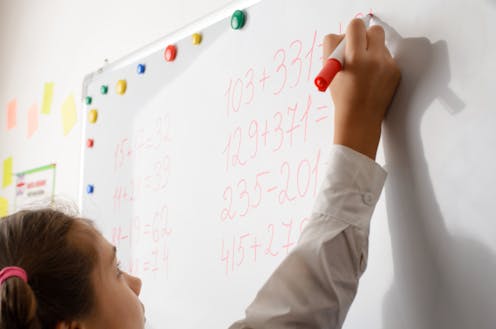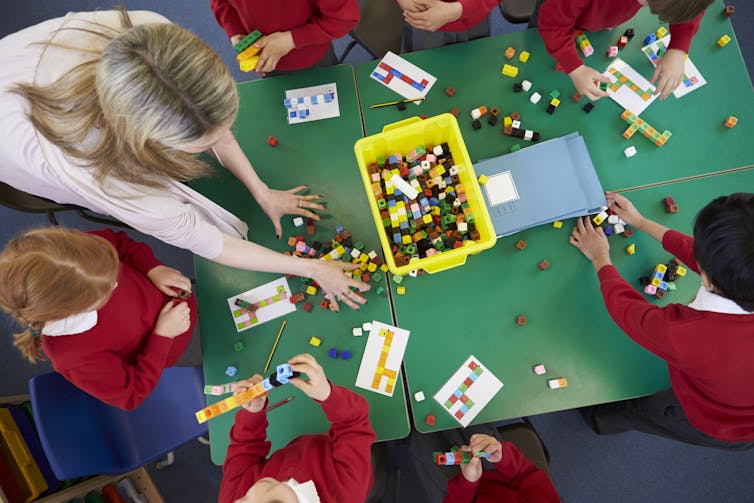
A major international test has revealed a concerning gender gap in maths among Australian school students.
In the 2023 Trends in International Mathematics and Science Study (TIMSS), Australia’s boys did much better than girls.
Year 4 boys outperformed girls by the equal highest margin out of 58 countries that did the test. The story is not much better for Year 8 students – Australia had the 12th-largest gender gap of the 42 countries.
This is out of character with other subjects, such as literacy, where the gender gap is either much smaller, or girls outperform boys.
Why is there a gap?
International researchers have been aware of a gender gap in maths for decades and have been trying to understand why and how to fix it .
It has previously been suggested boys are just better at mathematics than girls. However, this has been thoroughly debunked, with many studies finding no statistically significant biological difference between boys and girls in maths ability.
Yet figures consistently show girls are under-represented in the most advanced maths courses at school. For example, for the two most advanced Year 11 and 12 courses in New South Wales, girls are outnumbered by a ratio of roughly two to one.

A ‘boys’ subject?‘
Studies suggest social factors and individual motivation are playing a part in the maths gender gap.
Research has found stereotyping is a problem, with maths been seen as a “boys’ subject”. These ideas start developing from an early age, even as young as five.
These stereotypes can negatively impact girls’ motivation in maths and their self-efficacy (their perception of how well they can do), which then impacts performance.
Girls are also more likely to develop maths anxiety, which may be due to lacking confidence in their ability.
Another possible reason for this gap is it is not as important for girls themselves to be seen as skilled at maths as it is for boys. This has been linked to differences in subject engagement and subsequent performance.
Given how important mathematical skills are for workplaces today and in the future, we need to change these attitudes.

Read more: 'Maths anxiety' is a real thing. Here are 3 ways to help your child cope
What can we do?
Unfortunately, there are no simple answers. However, we recommend three strategies to help narrow the gap.
1. Treat boys and girls equally when it comes to maths: there is a noted tendency to expect boys to engage in more challenging maths than girls. If parents and teachers expect less from girls, we are feeding the stereotype that maths is “more suited to boys”. Simply holding beliefs that boys are better at maths can result in spending more time with or giving more attention to boys in maths. It can also be seen in behaviours where we think we are being supportive, such as reassuring a struggling girl, “it’s ok if you’re not great at maths”!
2. Talk to girls about maths: girls historically report lower confidence in maths when correlated with their actual achievement. This means girls potentially have inaccurate beliefs about their ability. So we need to understand how they feel they are progressing and make sure they understand their genuine progress.
3. Make use of female maths role models: when girls see themselves represented in maths-intensive careers – such as engineers, actuaries, chemists, economists, data scientists, architects and software developers – they are more likely to see the importance and value of maths. We know this can inspire young people.
The authors do not work for, consult, own shares in or receive funding from any company or organisation that would benefit from this article, and have disclosed no relevant affiliations beyond their academic appointment.
This article was originally published on The Conversation. Read the original article.







